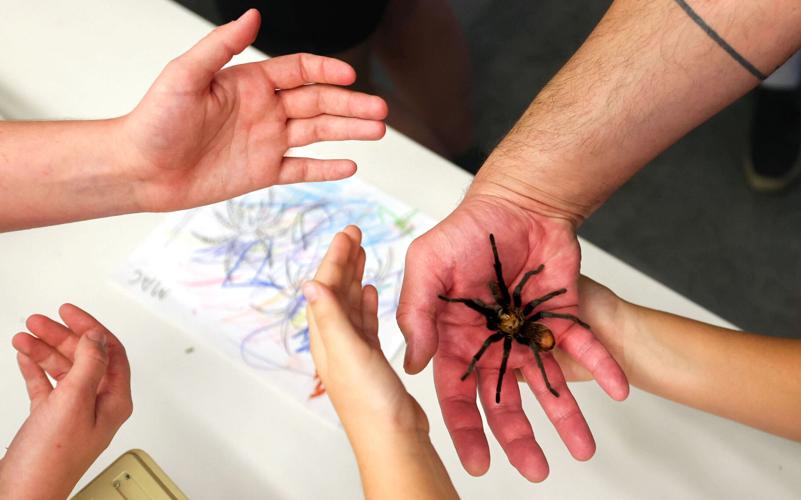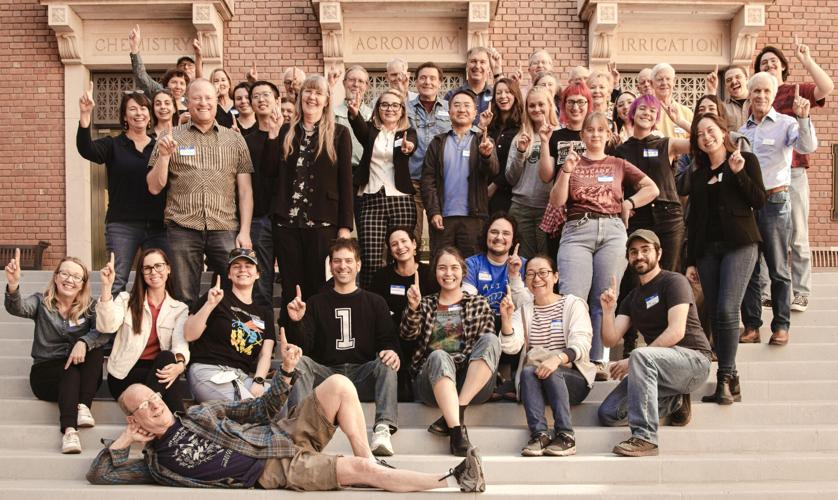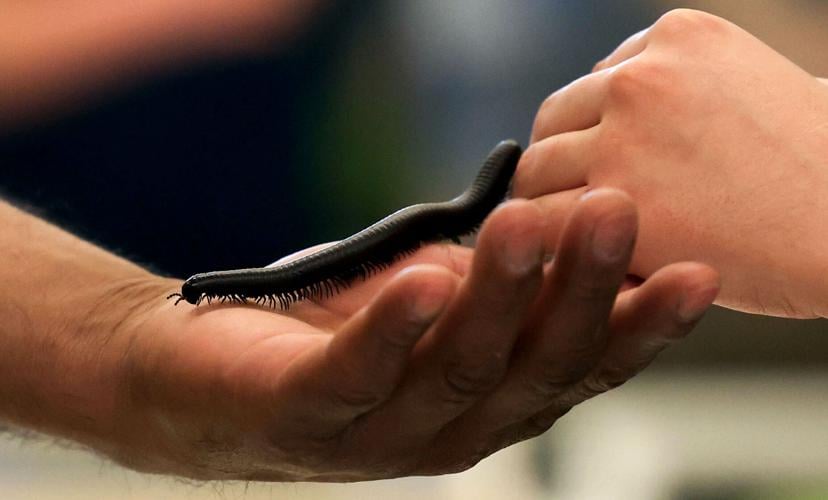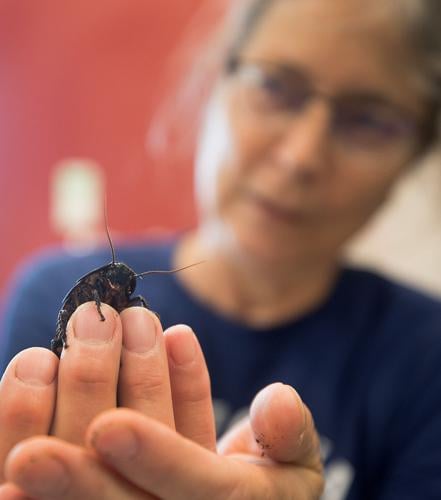An office with this many cockroaches doesnŌĆÖt usually score very high on employee satisfaction surveys.
But is no ordinary office. According to staff members there, itŌĆÖs one of TucsonŌĆÖs best places to work.
More than 1,000 local organizations were invited to participate in this year’s employer-ranking questionnaire from survey company Energage, in partnership with the ├█╠ęė░Ž±AV and . Just 24 were recognized as for 2025, including a certain bug-infested department in the university’s College of Agriculture, Life and Environmental Sciences.
Entomology employees hailed their office as a friendly, collaborative place, where bug-loving researchers feel respected and encouraged to pursue their own ideas and interests. Several of them credited their leadership ŌĆö and long-time in particular ŌĆö for fostering that welcoming environment.
People are also reading…

ŌĆ£The whole cotton ecosystem has been turned around,ŌĆØ says Bruce Tabashnik, regents professor and UA department of entomology head, with pesticide use drastically reduced.
As one survey respondent put it: ŌĆ£The culture of collegiality filters down from the top and bubbles up from the bottom. It is a pleasure to work with my colleagues, and weŌĆÖre good at getting stuff done together and individually. Accomplishments are noticed and celebrated.ŌĆØ
ŌĆ£IŌĆÖm thrilled,ŌĆØ said Tabashnik, who has headed up the department since 1996. ŌĆ£ItŌĆÖs recognition of our culture. We feel it, we talk about it, weŌĆÖre very conscious of it, and so to have external recognition, itŌĆÖs very rewarding.ŌĆØ

A giant desert millipede crawls onto the arm of a guest during the University of Arizona Department of EntomologyŌĆÖs annual Arizona Insect Festival inside Environment and Natural Resources 2 on Oct. 5.
The Entomology Department has about 100 employees, including 17 faculty members. Their main focus is on applied science for the public good, much of it in agriculture and aimed at minimizing the harm and maximizing the benefits of insects.
Tabashnik said the universityŌĆÖs groundbreaking pest-control research has been credited with helping to save the stateŌĆÖs cotton industry, one of the famous ŌĆ£Five Cs of Arizona.ŌĆØ
On the education side, the department offers a masterŌĆÖs and doctorate degree program in entomology and insect sciences that attracts about 30 graduate students a year. ThereŌĆÖs no bug-specific bachelorŌĆÖs degree program, but hundreds of students are drawn to its undergraduate course offerings each year, especially the entertaining stuff such as ŌĆ£Edible insects,ŌĆØ ŌĆ£How insects shaped human historyŌĆØ and ŌĆ£How insects conquered Earth.ŌĆØ
TabashnikŌĆÖs attitude: If youŌĆÖve got a choice between two ways of doing something, choose the one thatŌĆÖs the most fun.
The Entomology Department also houses and curates the U of A Insect Collection, the worldŌĆÖs most comprehensive archive of arthropods from the Sonoran Desert, with some 2 million specimens representing 35,000 species.
To expand its reach beyond the university, the department hosts the annual Arizona Insect Festival ŌĆö a free, kid-friendly event held each October ŌĆö and connects with more than 3,000 local elementary school kids through its Insect Discovery Outreach Program.
That program is directed by U of A associate professor and Ph.D. entomologist Kathleen Walker, who also serves as caretaker for the departmentŌĆÖs in-house colony of ŌĆ£cuddlyŌĆØ Madagascar hissing cockroaches.

Kathleen Walker, an entomologist and insect educator, holds one of her Madagascar hissing cockroaches at her lab at the University of Arizona.
Tabashnik said the people working for him could be anywhere, succeeding at whatever they might choose to do. ŌĆ£The reason theyŌĆÖre here is they care so much about insects ŌĆö studying them and learning and sharing that with others, making the world a better place with that knowledge,ŌĆØ he said. ŌĆ£By harnessing that, we get results. We have a culture that expects excellence and supports excellence.ŌĆØ
The proof is easy enough to find. The U of A has been ranked as the number 1 entomology department in the world for three years running by , an independent website that uses academic papers and citations to score the research performance of institutions.
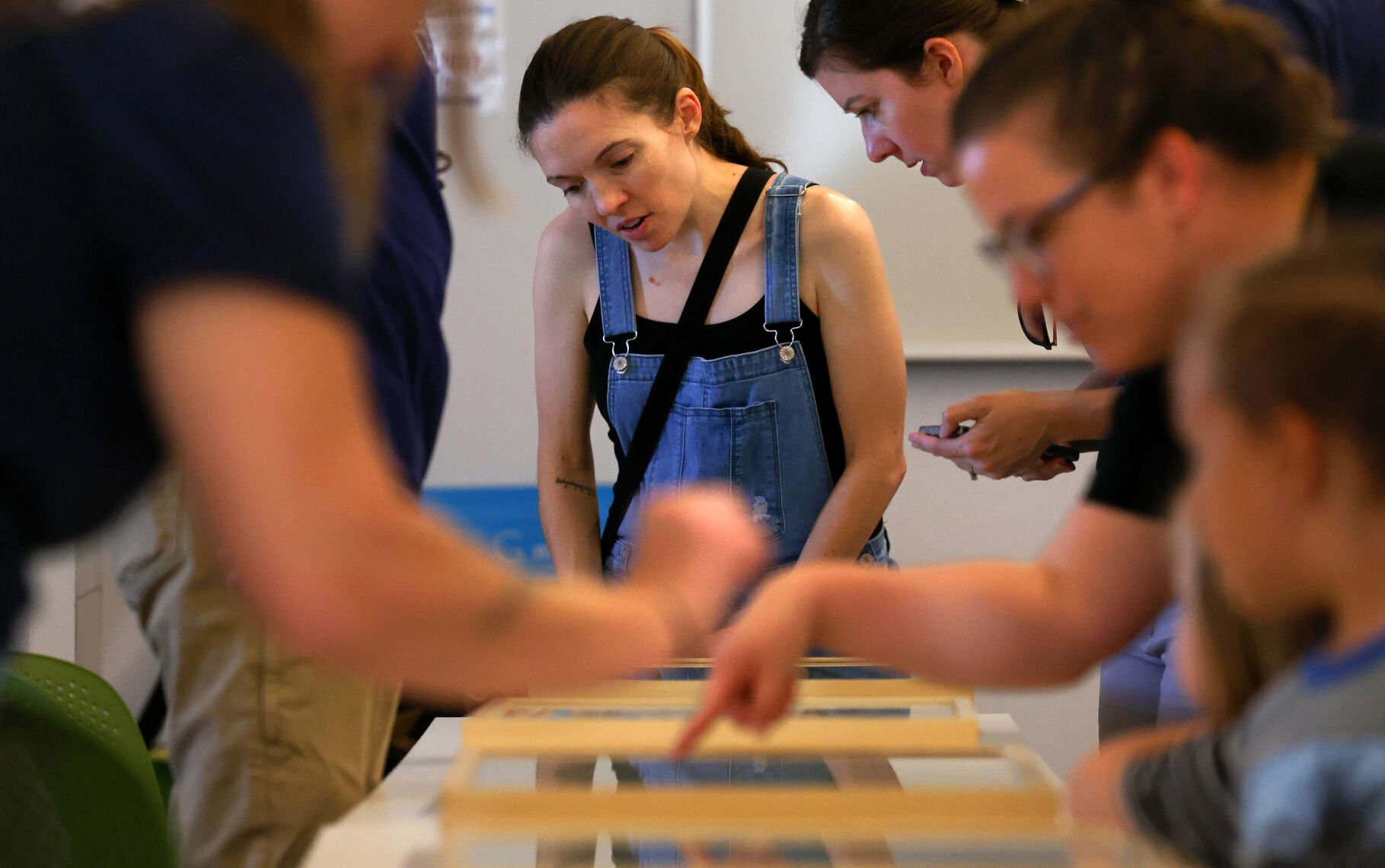
Guests explore a wide variety of insects during the University of Arizona Department of EntomologyŌĆÖs annual Arizona Insect Festival inside Environment and Natural Resources 2 on Oct. 5.
Tabashnik said creating a welcoming workplace has been a primary goal of his since he was first hired as department head almost 30 years ago. He has worked in contentious departments before, he said, and a fun and friendly environment just works better for everyone involved.
ŌĆ£We have incredible people, and I try to make it a happy place for them and let them follow their passion,ŌĆØ said Tabashnik, who was named as a RegentsŌĆÖ Professor in 2015 and elected to the National Academy of Sciences in 2023.
ŌĆ£The people we have, theyŌĆÖre brilliant, theyŌĆÖre hard working, and theyŌĆÖre really passionate about what they do. I think they share this feeling with me that weŌĆÖre very lucky we get to do something we love every day.ŌĆØ
Photos: 13th annual Arizona Insect Festival

Santiago Gonzalez holds a giant desert millipede during the University of Arizona Department of Entomology's annual Arizona Insect Festival at the Environment and Natural Resources 2, 1064 East Lowell Street, Tucson, Ariz., Oct. 5, 2025. The Bordered Mantis is the mascot for the 13th annual Arizona Insect Festival. The free festival offers guests opportunities to learn, see, hold and eat insects from more than 30 themed booths.
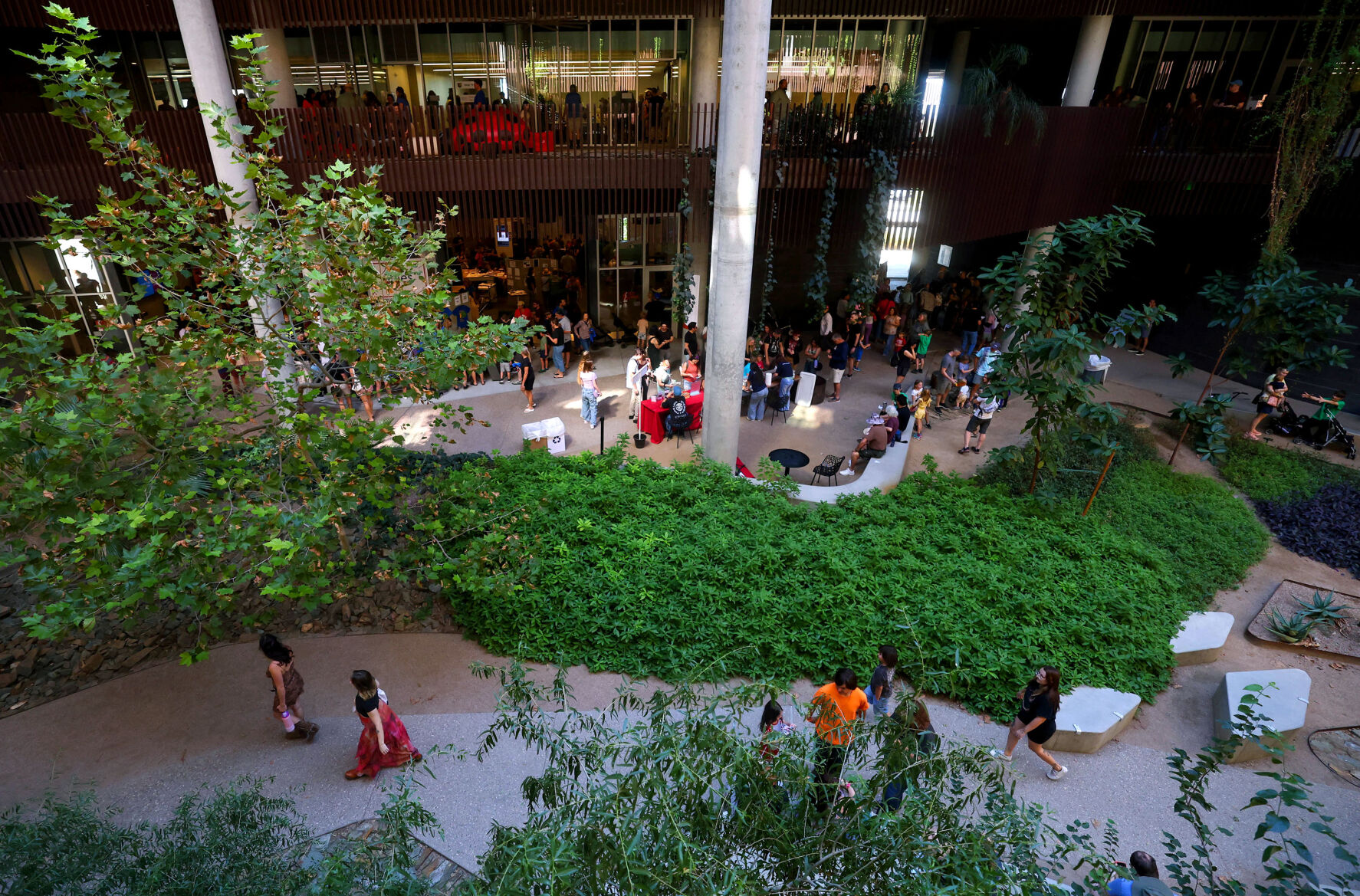
Hundreds of people explore the University of Arizona Department of Entomology's annual Arizona Insect Festival at the Environment and Natural Resources 2, 1064 East Lowell Street, Tucson, Ariz., Oct. 5, 2025. The Bordered Mantis is the mascot for the 13th annual Arizona Insect Festival. The free festival offers guests opportunities to learn, see, hold and eat insects from more than 30 themed booths.

An Arizona blonde spider crawls around the arms of guests attending the University of Arizona Department of EntomologyŌĆÖs annual Arizona Insect Festival inside Environment and Natural Resources 2 on Oct. 5.

Myles Kashanipour, a volunteer educator explains the lifestyle of a giant desert millipede during the University of Arizona Department of Entomology's annual Arizona Insect Festival at the Environment and Natural Resources 2, 1064 East Lowell Street, Tucson, Ariz., Oct. 5, 2025. The Bordered Mantis is the mascot for the 13th annual Arizona Insect Festival. The free festival offers guests opportunities to learn, see, hold and eat insects from more than 30 themed booths.

A hadrurus arizonensis scorpion is on display at the University of Arizona Department of Entomology's annual Arizona Insect Festival inside Environment and Natural Resources 2, 1064 East Lowell Street, Tucson, Ariz., Oct. 5, 2025.

Guests explore a wide variety of insects during the University of Arizona Department of EntomologyŌĆÖs annual Arizona Insect Festival inside Environment and Natural Resources 2 on Oct. 5.

Angel Valenzuela, a volunteer educator explains the life of a Carolina Mantis during the University of Arizona Department of Entomology's annual Arizona Insect Festival at the Environment and Natural Resources 2, 1064 East Lowell Street, Tucson, Ariz., Oct. 5, 2025. The Bordered Mantis is the mascot for the 13th annual Arizona Insect Festival. The free festival offers guests opportunities to learn, see, hold and eat insects from more than 30 themed booths.

A giant desert millipede crawls onto the arm of a guest during the University of Arizona Department of EntomologyŌĆÖs annual Arizona Insect Festival inside Environment and Natural Resources 2 on Oct. 5.

Aida Alvarez, left, and Ashlynn Ford greet guests at the transgenic crops for pest control booth during University of Arizona Department of Entomology's annual Arizona Insect Festival inside Environment and Natural Resources 2, 1064 East Lowell Street, Tucson, Ariz., Oct. 5, 2025.

A desert crustacean swims around a small enclosure during the University of Arizona Department of Entomology's annual Arizona Insect Festival inside Environment and Natural Resources 2, 1064 East Lowell Street, Tucson, Ariz., Oct. 5, 2025.


